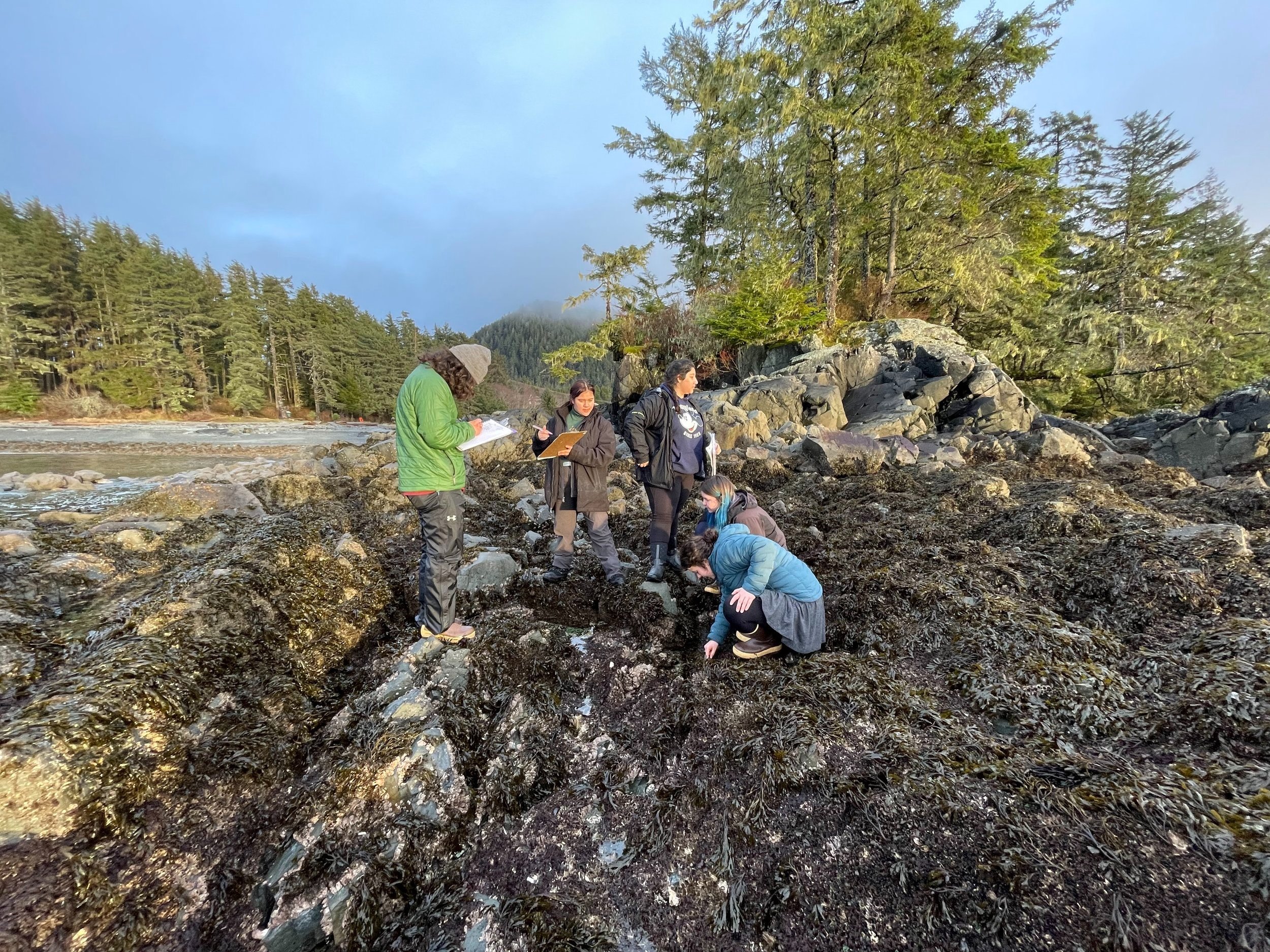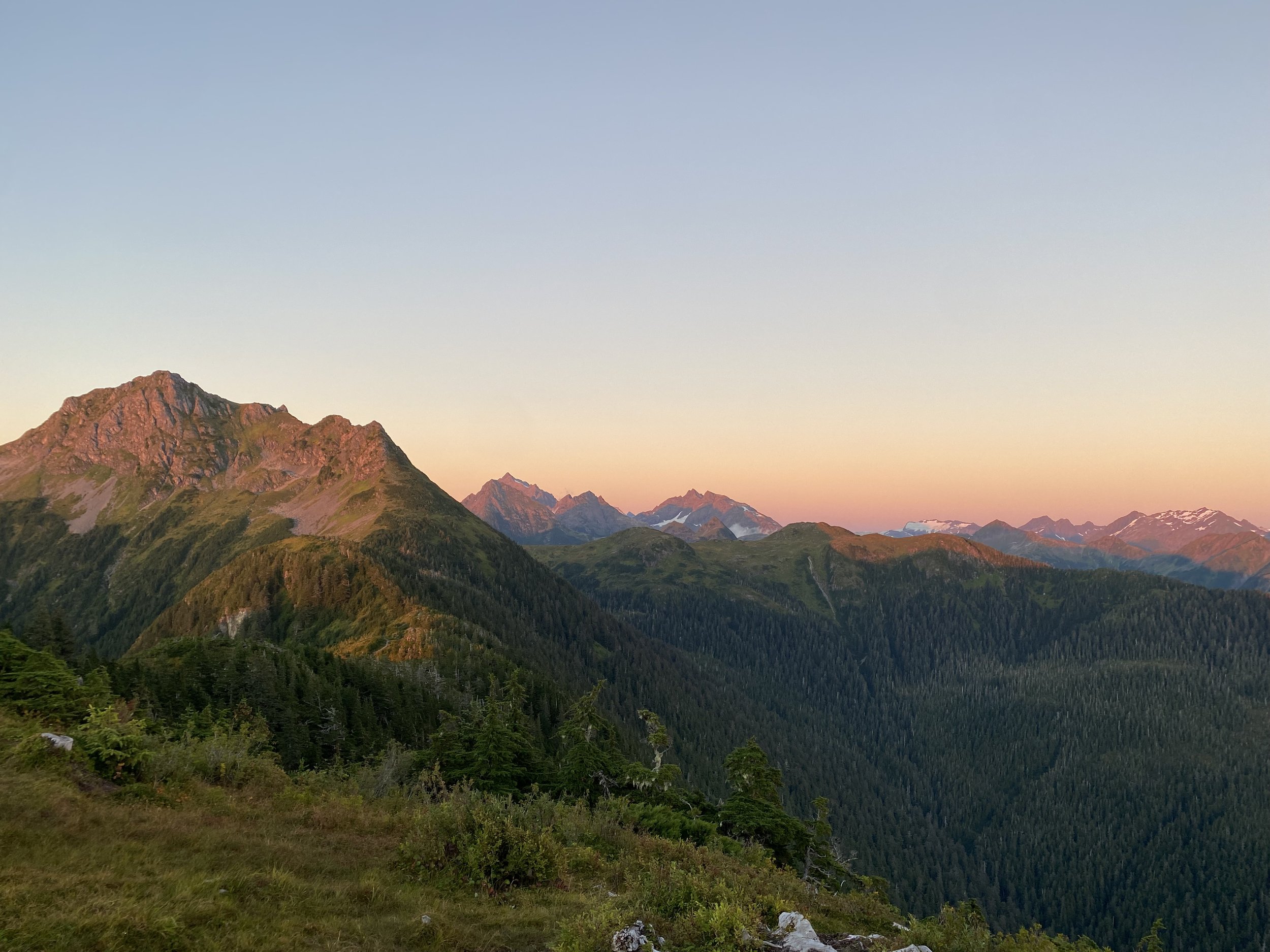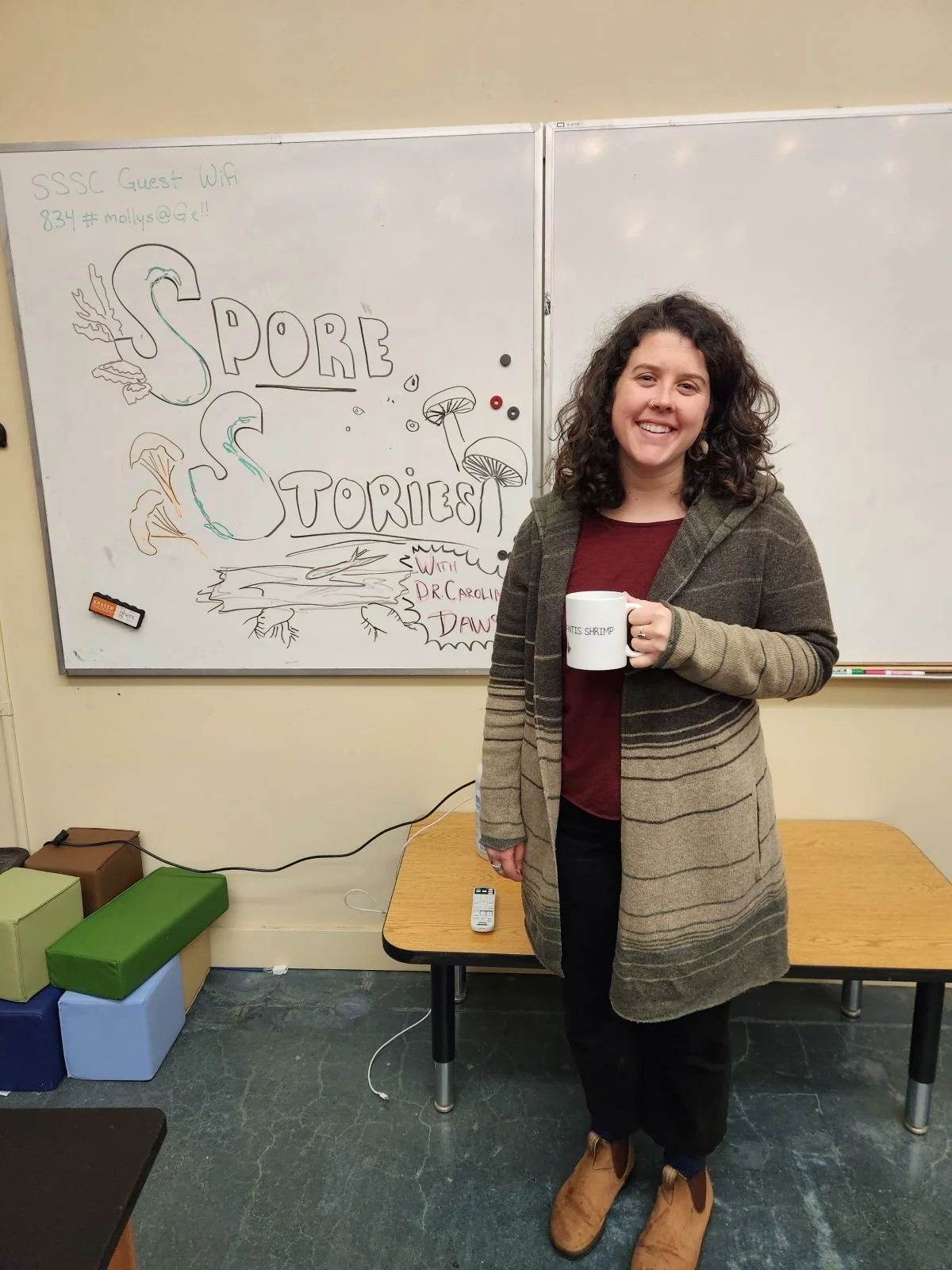
In my teaching, I strive to create a student-centered, inquiry-based environment where curiosity, problem-solving, and respect are at the core of learning. My classes equip students with skills to ask and explore complex questions about the natural world, preparing them to address ecological and social challenges through observation, communication, and practical application. By fostering systems-thinking, I encourage students to look beyond isolated facts and consider how organisms, environments, and communities interact. My approach is designed to support diverse student pathways, from research to teaching to environmental management, helping them navigate the interconnectedness and complexities of ecosystems and social-ecological systems.
Courses & Curricula
-

Fungi of the Forest
In the temperate rainforests of Southeast Alaska, spruce and hemlock tower over a rich understory of devil’s club and berry bushes. However, beneath the surface lies just as much, or even more, life. Much of this diversity belongs to the kingdom Fungi. Fungi are the hidden control panel of the forest. Though most often spotted as mushrooms dotting the forest floor, fungi are active year-round as dense mats of mycelia -- many miles of mycelia can be found in a single handful of soil. These fine fungal threads are the machinery of renewal in the forest, building fundamental connections of energy, nutrients, and organisms across trophic levels. The relationships between fungi and plants (as well as with humans and other creatures) are as old as time, and in this course we will follow their mycelial threads through the forest and into the past and future to understand how they tie ecosystems together through the movement of energy and nutrients. Along the way, they may help us to answer questions about how we are all connected, their and our own origin stories, and where we might be headed in a period of great global change.
-

Community Ecology
Perfectly poised between mountains and the sea, the ecological communities of Sitka are composed of organisms whose distributions and interactions reveal a deep story of this landscape. The study of ecology, a word derived from the Greek word oikos meaning ‘house, home, and family’, helps us make sense of the environments we encounter. A central component of ecology is exploring the rich web of connections between organisms, each other, us, and their environments – an ecological ‘household’. As residents or guests of these ecosystems, we can build a deeper sense of place through an ecological perspective. The fundamental goal of this course is for students to become scientists of place. They will learn the tools of ecological research by exploring the local ecosystems of Sitka. Students will develop skills for quantifying and comparing how communities of organisms rely on and respond to each other and their environment. They will develop and test hypotheses about species interaction, as well as learn to read and interpret scientific literature. By incorporating this scientific literacy and understanding with personal experiences and community knowledge, students can be better prepared to tackle big questions about the environment with empathy and discernment in the face of complexity.
-

Spring in Sitka: Ecology & Science Writing
This course serves as an introduction to both the climatic and ecological cycles of spring in Sitka and to ecological literacy and science writing skills. In this course, students will investigate the evolutionary interconnectedness between the physical environment and how organisms have adapted to the constant change and cyclical predictability of seasons in Southeast Alaska. Phenology is the study of cyclic and seasonal natural phenomena, especially in relation to climate and plant and animal life. In Sitka, the winter transformation into spring is a season of anticipation and arrival – fiddleheads and skunk cabbage blooms revive the forest floor, berry bushes leaf out and flower- foretelling the ripe fruits of summer, migratory birds make their annual return north, kelp forests begin their tremendous annual regrowth, and herring come to feed the oceans, lands, and people – an orchestra of organisms that have, over millennia, honed a masterful synchrony with the physical environment and interdependence on one another. Especially exploring the effects of climate change on the cycles and seasons in the ecosystems of Southeast Alaska, we will build scientific literacy skills to engage with science across genres: from natural history, journalism, policy and advocacy, science fiction, and primary literature from scientific journals. In building an ecological understanding of place in Sitka, students will study the language of science as a tool and become deft practitioners of interpreting and communicating scientific information from and to multiple audiences. As scientific writers, students will complete ecological writing projects for the public, policy makers, and other scientists and learn to craft communications with others across cultures and disciplines.
-

Ecology Labs & Activities
-
Outreach Curriculum
Activities for all ages
